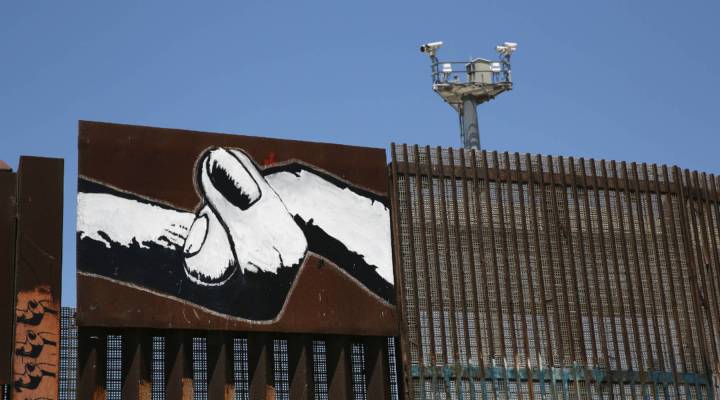
Border communities seek economic integration

Republican nominee Donald Trump continues to add details to his policy proposals, but one thing has stayed consistent — his plan to build a wall along the border with Mexico.
But some border communities are actually working to increase ties with Mexico. In San Diego, an airport terminal on the U.S. side lets people walk directly into the airport in Tijuana, just across the border. The bridge is an example of just how badly the cities of San Diego and Tijuana want to boost cross-border business and tourism.
“You know, we think about San Diego in a certain way. Tijuana and Baja think about their economies in a certain way, but now, we really consider it a mega-region,” said Joe Terzi of the San Diego Tourism Authority at the bridge’s opening ceremony.
And not just for tourists. Hector Garcia lives in Tijuana, but commutes to work in San Diego.
“It’s much better to work in the U.S. than in Mexico,” he said as he briskly walked toward the pedestrian crossing on a rainy morning.
Garcia has a factory job doing quality control, and said the conditions, hours, and pay are better on the San Diego side.
“I work for a Mexican company,” he explained, “but the Mexican company has workers over there, and I have my salary in pesos.”
He makes 2,000 pesos a week — a little over a hundred dollars — which is more than he would make at home in Tijuana, but less than he would make if he worked for an American company.
Andrew Selee of the Mexico Institute at the Wilson Center said people who live near the border think differently about it than those in the rest of the country.
“They make choices about where they are going to shop on a given day, where they are going to live, where they are going to work based on what’s best for their livelihood, and they think about both sides of the border as an option,” he said. Many businesses do the same.
Kimberly Adams’ border reporting was supported by the International Women’s Media Foundation’s Adelante reporting fellowship.
There’s a lot happening in the world. Through it all, Marketplace is here for you.
You rely on Marketplace to break down the world’s events and tell you how it affects you in a fact-based, approachable way. We rely on your financial support to keep making that possible.
Your donation today powers the independent journalism that you rely on. For just $5/month, you can help sustain Marketplace so we can keep reporting on the things that matter to you.


















